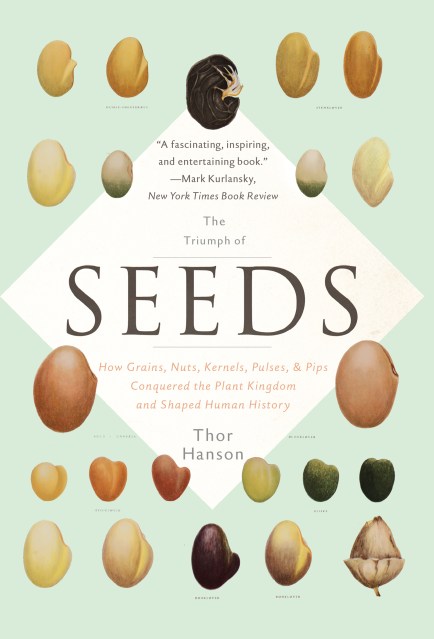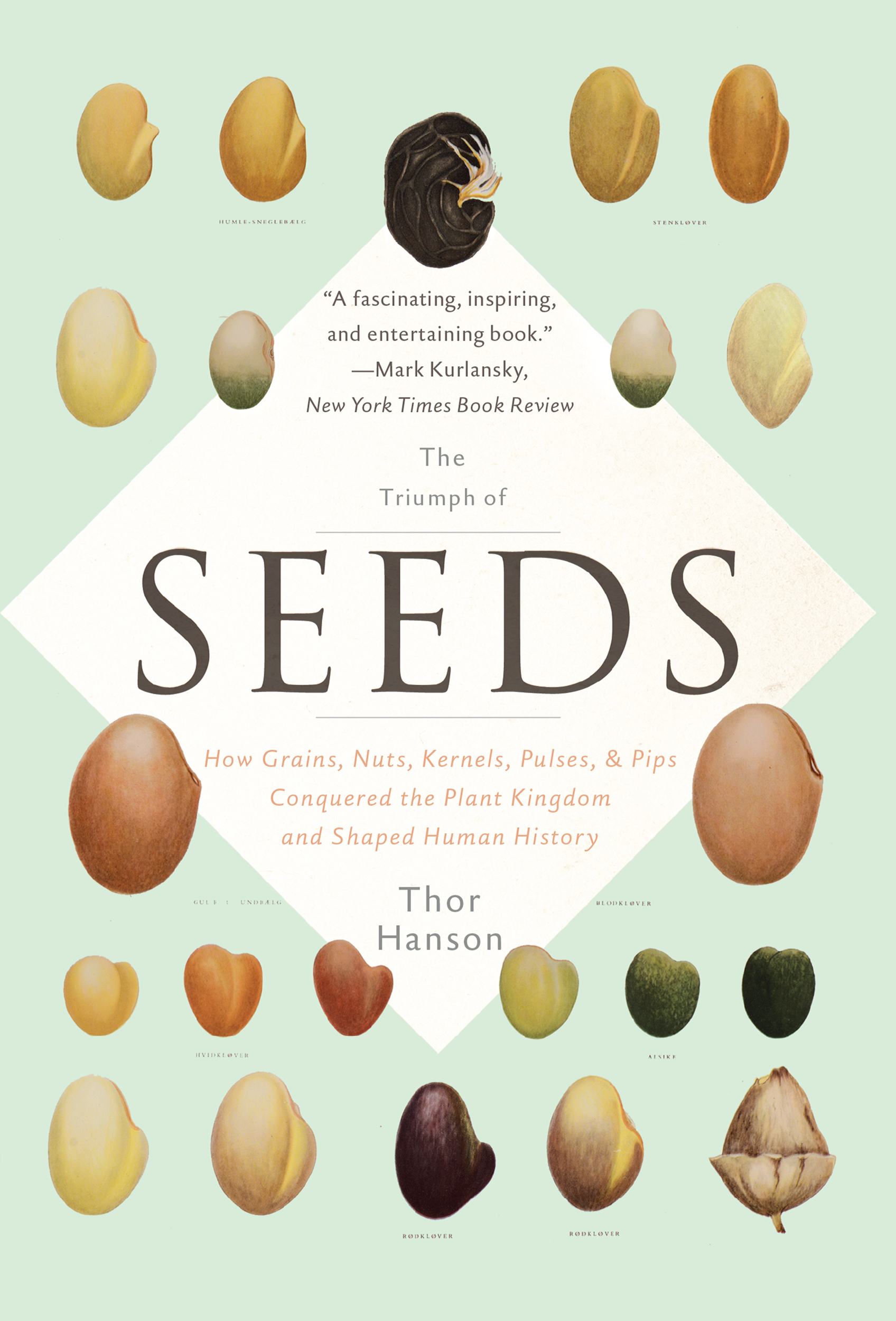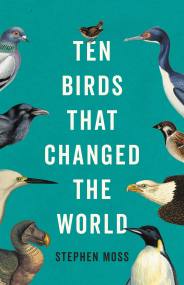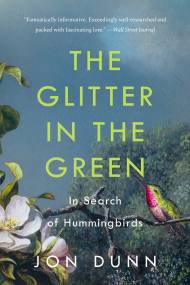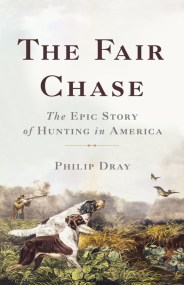Promotion
Use code MOM24 for 20% off site wide + free shipping over $45
The Triumph of Seeds
How Grains, Nuts, Kernels, Pulses, and Pips Conquered the Plant Kingdom and Shaped Human History
Contributors
By Thor Hanson
Formats and Prices
Price
$12.99Price
$15.99 CADFormat
Format:
- ebook $12.99 $15.99 CAD
- Hardcover $26.99 $33.50 CAD
- Trade Paperback $18.99 $23.99 CAD
This item is a preorder. Your payment method will be charged immediately, and the product is expected to ship on or around March 24, 2015. This date is subject to change due to shipping delays beyond our control.
Also available from:
"The genius of Hanson's fascinating, inspiring, and entertaining book stems from the fact that it is not about how all kinds of things grow from seeds; it is about the seeds themselves." — Mark Kurlansky, New York Times Book Review
We live in a world of seeds. From our morning toast to the cotton in our clothes, they are quite literally the stuff and staff of life: supporting diets, economies, and civilizations around the globe. Just as the search for nutmeg and pepper drove the Age of Discovery, coffee beans fueled the Enlightenment and cottonseed sparked the Industrial Revolution. Seeds are fundamental objects of beauty, evolutionary wonders, and simple fascinations. Yet, despite their importance, seeds are often seen as commonplace, their extraordinary natural and human histories overlooked. Thanks to this stunning new book, they can be overlooked no more. This is a book of knowledge, adventure, and wonder, spun by an award-winning writer with both the charm of a fireside story-teller and the hard-won expertise of a field biologist. A fascinating scientific adventure, it is essential reading for anyone who loves to see a plant grow.
Genre:
-
"A fascinating, inspiring, and entertaining book.... Hanson takes one of the least-impressive-looking natural objects and reveals a life of elegance and wonder."Mark Kurlansky, New York Times Book Review
-
"[An] engaging book.... What makes The Triumph of Seeds more than a routine pop botany book is the way Mr. Hanson teases out the resonances between the ways that plants and humans use seeds.... [A] lively and intelligent book."Richard Mabey, WallStreet Journal
-
"[A] rip-roaring read."Robert Krulwich, NationalGeographic's Curiously Krulwich blog
-
"With light, engaging prose Hanson shows how the little spheroids we tip out of a packet are in fact supremely elegant genetic time capsules.... You will never be able to look at an orange pip or a sunflower seed in the same way again."New Scientist
-
"Thor Hanson has taken the history and science of these little marvels and drawn out a fascinating account of seed culture."Home Wet Bar blog
-
"This is a charming book, inspired by Hanson's forays into seed identification and dispersal with his young, seed-obsessed son.... Hanson's twist of looking at human interactions with plants in their embryonic stage is new.... The Triumph of Seeds will engender thoughtful consideration of our joint future."Nature
-
"[A] delight. Composed in charming and lively prose, the book introduces readers to a variety of quirky figures - biologists, farmers, archaeologists and everyday gardeners - who have something profound to say about a seemingly mundane topic: those little kernels that, against tremendous odds, have managed to take root all around us.... The Triumph of Seeds is a remarkable, gentle and refreshing piece of work that draws readers further into the wide arms of the world and makes them grateful for it."BookPage
-
"[F]ast and fascinating prose.... Hanson, who has also chronicled feathers and gorillas, is a conservation biologist and Guggenheim fellow, and an ace dot-connector: He can draw a line between all the grain panics and crises and the tiny, miraculous structure of the seeds themselves, because he dives deeply into botany, economy and history. Also, he's just plain fun."Denver Post
-
"[Hanson is] jocular and entertaining in his dispensing of remarkable facts about these little vessels of life-to-be.... From high-tech, high-security seed banks bracing for climate change to the story of the gum extracted from guar seeds that is used in everything from ice cream to fracking, this upbeat and mind-expanding celebration of the might of seeds is popular science writing at its finest."Booklist, starred review
-
"Who knew that seeds could be so thrilling and dangerous? Thor Hanson is a lively storyteller, a lyrical writer, and a quick wit. The Triumph of Seeds is more than an engrossing work of natural history. It's a compelling and highly entertaining journey, populated by scientists and historians, criminals and explorers, aviators and futurists. Following Hanson's global voyage is the best sort of armchair travel, because it is filled with wonder, poetry, and discovery."Amy Stewart, author of TheDrunken Botanist: The Plants That Create the World's Great Drinks, a NewYork Times Bestseller
-
"This beautifully written book is a magnificent read. Every page is full of surprises and illuminating insights, illustrating the fascinating evolution of seeds, and their extraordinary impact on humans, past and present. A master storyteller, Hanson has created a first-rate natural history. When you reach the end of this page-turner, you will wish there were more...and you will never look at seeds in the same way."Eric Jay Dolin, author of Leviathan:The History of Whaling in America and When America Met China: An ExoticHistory of Tea, Drugs, and Money in the Age of Sail
-
"As he did in his phenomenal Feathers, Thor Hanson brings us the incredible world of seeds in a package as graceful and elegant as they are themselves, gift-wrapped in utterly seductive stories. I cannot recall a book I was so eager to finish, that I might begin it again."Robert Michael Pyle, authorof Wintergreen and Mariposa Road
-
"If you eat seeds of any kind, you must read this book! Ecologist Hanson gives us a rich Darwinian view of how seeds came to be the most important nutritional resource for human as well as older than human species. He is at his best when we are in the field with him, learning like detectives the 'whodunnits' of seed dispersal. You will never look a seed in the eye again without thanking Thor."Gary Paul Nabhan,Franciscan brother and author of Enduring Seeds and Food, Genes, andCulture
-
"Thor has done it again. In a page-turner, he tells the stories of seeds, their ecology, evolution and histories and why each of us every day depends on, relies on, delights in or suffers from seeds. This book will change the way you think about your coffee, your chocolate or even just the weed growing stubbornly (from a seed) out of the crack in the sidewalk. Seeds are everywhere--a reality that you will never forget again after reading this book."Rob Dunn, author of TheWild Life of Our Bodies
- On Sale
- Mar 24, 2015
- Page Count
- 288 pages
- Publisher
- Basic Books
- ISBN-13
- 9780465048724
Newsletter Signup
By clicking ‘Sign Up,’ I acknowledge that I have read and agree to Hachette Book Group’s Privacy Policy and Terms of Use
